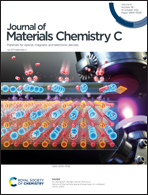Bionic optical physical unclonable functions for authentication and encryption†
Abstract
Information security is of great importance for modern society with all things connected. Physical unclonable function (PUF) as a promising hardware primitive has been intensively studied for information security. However, the widely investigated silicon PUF with low entropy is vulnerable to various attacks. Herein, we introduce a concept of bionic optical PUFs inspired by unique biological architectures and fabricate four types of bionic PUF by molding the surface micro–nano structures of natural plant tissues with a simple, low-cost, green and environmentally friendly manufacturing process. The laser speckle responses of all bionic PUFs are statistically demonstrated to be random, unique, unpredictable and robust enough for cryptographic applications, indicating the broad applicability of bionic PUFs. Based on this, the feasibility of implementing bionic PUFs as cryptographic primitives in entity authentication and encrypted communication is experimentally validated, showing its potential in future information security applications.



 Please wait while we load your content...
Please wait while we load your content...